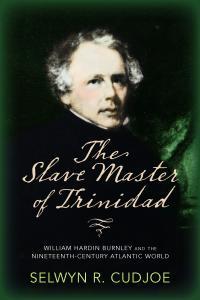Thinking Globally; Acting Locally
By Dr Selwyn R. Cudjoe
July 25, 2019
After I spoke at London's Maritime Museum last Monday, I traveled to France for personal as well as scholarly reasons. Years earlier I had spent a semester at Paris and had taken my daughter to the University of Strasbourg on another occasion to study the French language for a summer. I never mastered the language.
Visiting Paris is always edifying culturally. I particularly wanted to see how the French had renovated the 17th century Hotel Sale, the home of the old Picasso Museum, to accommodate the needs of the 21st century. The museum was reopened in 2014 after five years of renovation at a cost of 52 million euros (US$66 million). I had spent a lot of time at the old museum admiring Picasso's works although I was more interested with what he had borrowed from Africa than what his Spanish heritage bequeathed to him.
Picasso's Cubist period (1907-15) interested me immensely. I admired "Les Demoiselles d'Avignon" (1907) that embodied all the characteristics of Cubism, a process in which "painting abandons perspectives and fragments, the object being shown from multiple viewpoints" (The New Picasso Museum).
Picasso's work led me naturally to the painting of LeRoi Clarke. I was intrigued by the abstract nature of their art and their ability to capture the subject matter through fragments. LeRoi always digs deeply into his African past to chronicle our (Trinbagonian) assent to the El Tucuche of our being.
LeRoi fondly recalls C. L. R. James's reaction on seeing his work for the first time. James said: "I have studied Western art. I have studied Picasso but I have never seen anything like this." James knew what he was talking about. In 1937 while James was writing The Black Jacobins (1938), Picasso was painting "Guernica," his intensely political painting. The title of the painting refers to the city that was bombed out by the Nazis during the Spanish Civil War.
Both of these events—the horror of the Spanish Civil War and Picasso's depiction of that horror—influenced James's work. There are several allusions to the Spanish Civil War in The Black Jacobins, and "Guernica" was James's favorite painting. Several years ago I flew to the Museo Nacional de Arte in Madrid, Spain, where "Guernica" is housed, to study this masterpiece. It's a work that takes one's breath away.
I also visited the Rodin Museum while I was in Paris. I wanted to see "The Thinker," the bronze sculpture for which Auguste Rodin (1840—1917) is well known. It sits at the entrance of the museum. If Picasso used an abstract mode to capture his world, Rodin worked within the classical medium. He was interested "in movement, the expression of the body, chance effects and the incomplete fragments" (Francois Blanchetiere, Rodin).
"The Thinker" was influenced by Dante's poem "The Divine Comedy." Blanchetiere says that Rodin "wished to place the figure of Dante, physically present in Hell, meditating both upon the fate of humanity and upon his poetic oeuvre." It was named "The Poet" when it was first exhibited in 1888. It was enlarged in 1903 and renamed "The Thinker."
Even as I contemplated this sculpture, described as the most famous in the world, I heard Trinidad echoes in my mind. Eric Williams referenced Dante in his autobiography Inward Hunger. He wrote that even in the insanity that was Trinidad's, he was "determined to prove that, like Dante's Ulysses I, 'Could conquer the inward hunger that I had/ To master earth's experience, and to attain/ Knowledge of man's mind, both good and bad.'"
Williams's father wanted him to be a professional man. Eric, however, was influenced by W. D. (Billy) Inniss, his teacher at Queen's Royal College who graduated in history from Oxford University. Eric writes in his autobiography: "My father knew that what he had never been given an opportunity to achieve with his brains, he might with his loins. The island scholarship for his son became the dream of his life."
A similar thing happened to Rodin. Although his father, Jean-Baptiste Rodin, preferred that he choose "an honorable and steady profession," he nonetheless encouraged his son to become an artist. He wrote: "One day, we must…be able to say of you as we did of other great men, the artist Auguste Rodin is dead, but he lives on for posterity today, in the future and for years to come" (Blanchetiere, Rodin).
Although James and Williams thought highly of the works of Picasso and Rodin, they were determined to give voice to their peoples' feelings. Before he left Trinidad in 1932 for England, James was determined to write a book in which Africans or people of African descent "instead of constantly being the object of other people's exploitation and ferocity would themselves be taking action on a grand scale and shaping other people to their own needs" ("Foreword to Black Jacobins, 1980).
In 1950, Williams told the Historical Society of Trinidad and Tobago that "West Indian history in its broadest regional aspect should be taught in every school in the area. The neglect of the subject in most schools, the perfunctory treatment accorded it in few, are politically unsound, culturally anomalous and pedagogically indefensible."
Why then, after all these years, Atakalan complains: "Most marginalized youths feel economically or socially excluded from the contemporary Carnival structure which seems to be our main cultural identity, so they hold on to dancehall ideology especially ones with destructive lyrics" (Express, July 14).
What have we lost over the years? Why can't we think globally even as we act to control our own space?
Professor Cudjoe's email address is scudjoe@wellesley.edu. He can be reached @ProfessorCudjoe.
Share your views here...

The Slave Master of Trinidad by Dr. Selwyn R. Cudjoe
|

